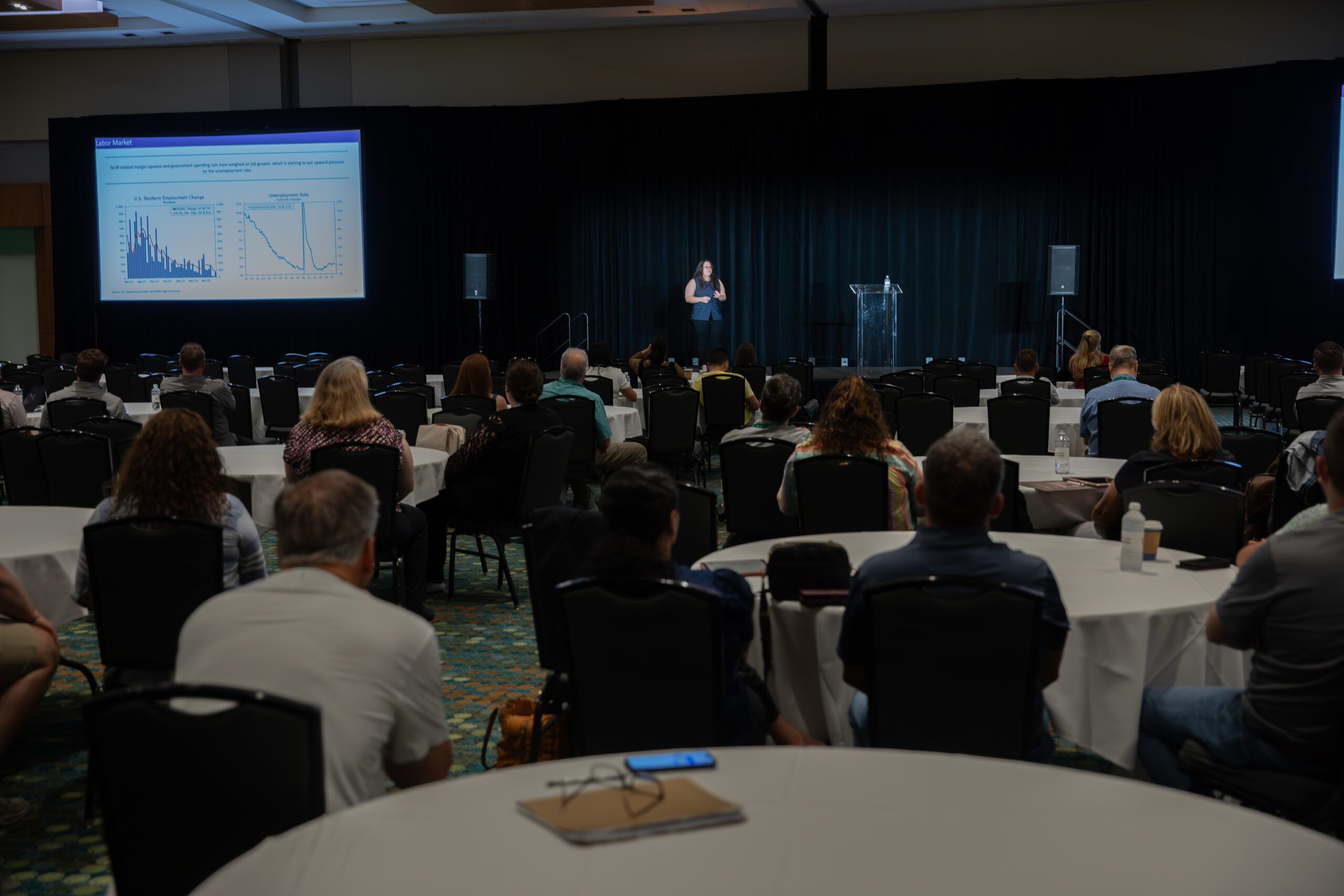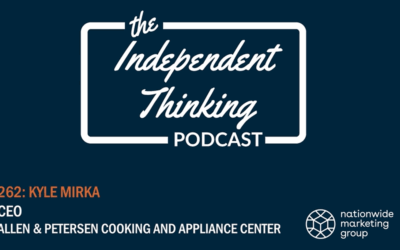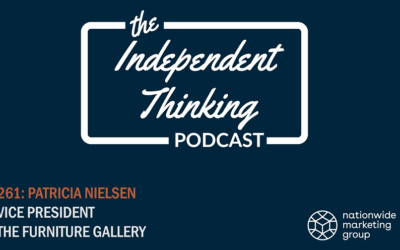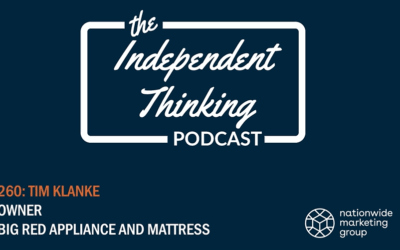At our Nashville PrimeTime in August 2025, Wells Fargo Economist Nicole Cervi returned to give a 2025 economic update for attendees. In case you missed it, here is a high-level look at what Cervi covered and why it matters to independent retailers.
Current Tariff Overview
Starting off with a top-of-mind topic, Cervi noted that the estimated U.S. effective tariff rate is currently the highest in almost 100 years.
- Early 1930s estimated rate: ~20 percent
- 2025 estimated rate: ~18 percent
U.S. Economic Growth in 2025
Next, Cervi covered Gross Domestic Product (GDP), which is a major indicator of a country’s economic health. Overall, Cervi acknowledges that real GDP growth has been volatile, with trade typically blamed.
Yet, for Q2, the U.S. GDP was 3 percent — falling into what experts consider a good annual GPD range of 2-3 percent. Overall, sluggish growth is expected for the remainder of the year.
How is GDP calculated? The most common method uses the following formula:
GDP = Consumption + Investment + Government Spending + Net Exports
- Consumption = Private consumer spending
- Investment = Business investments in capital
- Government spending = Government expenditures
- Net Exports = Exports minus imports
Cervi went on to explain that underlying demand has lost momentum amid a stalling in consumer spending, with notable weakness in discretionary services — though spending on discretionary goods increased year-over-year (YoY) for June 2025.
Here’s a look at YoY percent change for June in both discretionary and non-discretionary spending categories:
- Non-discretionary goods: +3.2 percent
- Non-discretionary services: +3.0 percent
- Discretionary goods: +2.8 percent
- Discretionary services: -0.7 percent
Existing Home Sales in the U.S.
On the topic of shelter, Cervi shared that existing home sales in June reached 3.9 million — which is considered a lukewarm pace, as homeownership is becoming more cost-prohibitive for many in the U.S.
Referencing data from the Federal Reserve Bank of Atlanta and Wells Fargo, Cervi illustrated that, while the average affordability threshold is 30 percent — measured by homeownership cost as a share of median income — homeownership costs reached 53 percent of median income for June 2025.
Additionally, although improving supply is slowing the pace of home price appreciation, home prices remain elevated, and inventory is still scarce in most markets.
New Home Sales in the U.S.
Improved supply is also impacted by new home sales. According to the data shared by Cervi, builder incentives like price cuts and mortgage rate buy-downs have sustained new home sales, however momentum is starting to slow. For example, new home sales in June 2025 were down 6.9 percent YoY.
Home Improvement Activity in the U.S.
In terms of overall residential investment, Cervi pointed out that home improvement has been the strongest investment category recently. The Harvard Joint Center for Housing Studies shows that, in Q2 of 2025, remodeling activity was up 1.8 percent.
Home Construction in the U.S.
Looking at U.S. Department of Commerce data on building permits, Cervi predicted that single-family construction is likely to soften amid elevated inventory levels and a weak macroeconomic backdrop. However, multifamily development could show modest improvement, supported by firming apartment demand.
U.S. Inflation and Consumer Sentiment for 2025
Cervi next shifted to inflation, citing that goods inflation has picked up amid tariffs, but overall and core inflation have not materially changed since the beginning of 2025, as shelter inflation has continued to cool.
According to the University of Michigan, consumer sentiment shows that, even though purchasing power broadly remains intact, weak confidence has underpinned the slowdown in spending. Yet, this broadening consumer fatigue may actually limit the rise of inflation, even as it is likely to strengthen by the end of the year.
Still, higher inflation could dampen real income and spending growth in 2025.
Outlook for the Rest of 2025
Inflation
Wells Fargo and Cervi expect the Federal Open Market Committee (FOMC) to “look through” the inflationary impact of tariffs and cut rates in the coming months to encourage hiring and support growth.
Interest Rates
Short-term rates are poised to fall this year as the FOMC cuts and growth downshifts.
Some further Fed easing should help reduce benchmark borrowing rates, but concerns over inflation and the federal deficit are likely to limit the decline.
READ MORE on the 2025-2026 economic outlook and the independent retail advantage.




